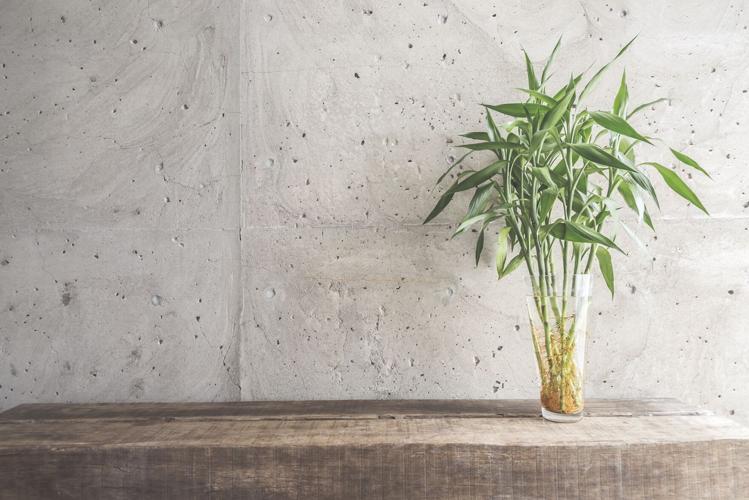
Vase plant decoration with empty room - vintage haze filter
By Andrea Papagianis-Camacho
Your home should be a place of refuge and relaxation. Often, though, a sink of dirty dishes, the never-ending laundry, ever mounting clutter and projects that keep being put off push us away from our haven. It’s time to take back the house.
We talked to local design experts in decorating, lighting and landscaping to get their takes on how to create a calming space for relaxation, meditation and simpler living.
Whether you want to create a designated Zen space for meditating or want to integrate comforting elements into your entire home, these expert tips will help you find balance and create harmony at home. Just a few simple changes can leave you in a more positive state of mind.
1. Clean up and clear out. Clutter is a Zen design no, no. Take it from designer Laura LeFever, with Reflections Interiors and Design in San Juan Capistrano, “Get rid of all clutter!” Zen design is restful and uncluttered. Its simplicity and emptiness can be dramatic and calming, she said. Ridding your home, car or office of clutter will not only help create a more relaxed atmosphere but also leave you more attentive, calm and productive. Also, try removing electronics from a given space in your home. Televisions and hand-held sources of distractions like tablets and smartphones are disruptors. Power down and relax in a technology-free space.
2. Use natural and soft light. Softening a room can be as simple as dimming the lights, said Alex Miranda, showroom manager at Lighting Innovation in San Clemente. Install a dimmer and bring lighting down when you aren’t in need of much brightness. Changing out fluorescent light bulbs with warmer incandescent or softer LED bulbs also helps, he said. For a more dramatic change, Miranda suggests using several lighting options in one space. Take the dining room. A combination of recessed lights, a central chandelier and buffet lamps can set a warm, inviting mood. And when possible, open the blinds and naturally illuminate interior spaces.
3. Bring the outdoors in. Houseplants can play an important role in interior design by infusing life into a room, creating a calming atmosphere and adding visual depth— they also purify the air. In search of a hearty, low light loving plant, Andrea Kemp, a nursery professional at Plant Depot in San Juan Capistrano recommended, the pothos plant. It’s easy to maintain and thrives in a wide range of environments. Try growing in bright or low light and dry soil or water-filled vases. The upright, succulent-like Sansevieria plant, available-everywhere Chinese evergreen and cleansing Dracaena family trees are other indoor garden options.
4. Embrace a neutral palette. Colors have the ability to calm, and even heal. Think of a clean, neutral color room as your blank canvas or as a fresh start. Choose a paint hue that feels good to you—maybe a tranquil blue, serene gray, warm beige or hopeful cream. Keep textiles neutral too. When adding accents to the space, choose natural, authentic and fabrics in neutral tones of the earth. Layering textures in a room will create warmth and interest, she said. A little boldness is alright, too. “A pop of red is okay, but keep the patterns simple and understated,” LeFever said.
5. Keep decorations simple. When it comes to decorating your de-cluttered, fresh space, LeFever said to, “Use accessories sparingly. Remember, simplicity is the essence of beauty.” Choose accessories in a natural material like wood, glass and metal, then add in geodes and agates—colorful natural stones that have been used for centuries to create a sense of harmony. Furniture should be kept simple with clean, straight lines and low seating. For windows, keep treatments natural and airy. To add a calming effect, integrate water elements into your design. Fountains and bubbling water as well as paintings of waterfalls and waterscapes can be soothing.
Read more about design in this special section titled, “Inside/Outside” here:






